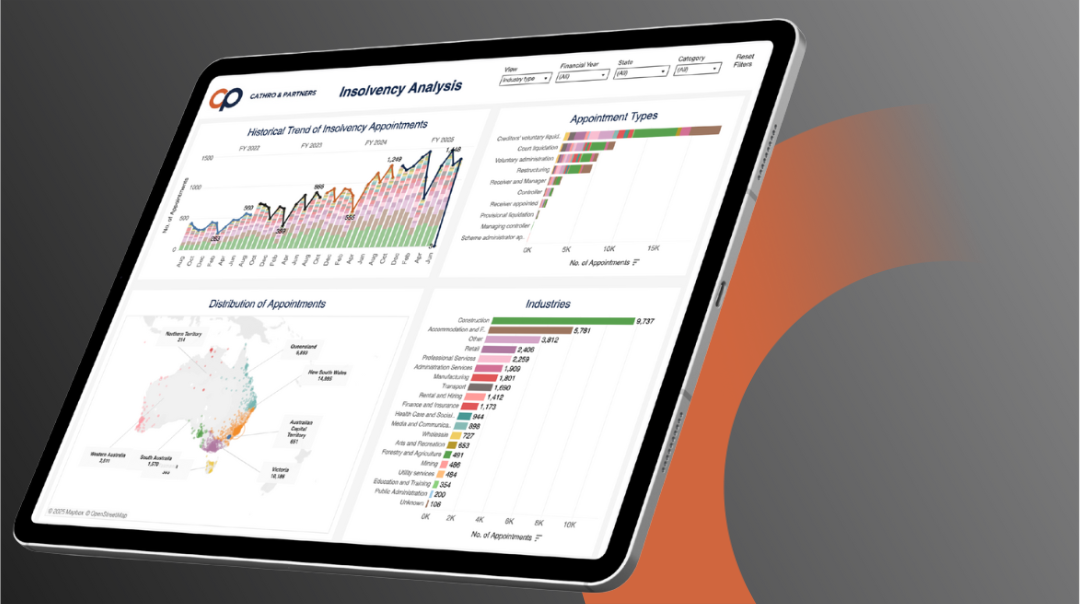Commercial Property Finance: A renewed sense of optimism
After several years of turbulence, the commercial property finance market has entered 2025 with renewed, if cautious, optimism. The economic headwinds of recent years, including rising interest rates, global instability and shifts in asset class performance, prompted many investors and developers to take a “wait and see” approach. But the early signs this year are encouraging.
Interest rates have started falling – what next?
The first cash rate cut has provided welcome relief for investors and developers after a prolonged period of elevated borrowing costs. The market had been pricing for cuts for a while, confident that the rate hike cycle was behind us, which has paved the way for some competitive terms and pricing.
Recent global economic changes triggered economists and financial markets to bring forward their timing for more rate cuts with some calling for a double rate cute when the RBA meets in a month’s time.
Depending on how economic instability affects buyer and lender confidence, the earlier-than-anticipated cuts could be very positive for the property market.
Private Credit Market Growth
With traditional banks enforcing stricter lending criteria, particularly post-GFC, non-bank lenders have stepped in to fill the gap. These lenders are particularly active in the development finance space, where they’re offering higher leverage coupled with ease of access.
Across the last few years, we’ve seen the private credit market carve out more market share creating a borrower friendly market with lenders racing to the bottom to secure good sponsors and projects.
However, this growth has attracted regulatory and media scrutiny with many expecting the rate of the market’s growth to slow as ASIC and other regulatory bodies take notice.
What does this mean for borrowers?
Good news for borrowers, this competition between lenders has decreased the gap between bank and non-bank lender pricing.
For investment debt, we’re seeing some lenders offering no establishment fees, creating a great opportunity for some borrowers to refinance their existing debt. We are regularly seeing margins at or below 1.50% for strong assets, locations, sponsors and tenants.
For developers, the new norm in the non-bank market is leverage up to 75% (90% of cost). At Stamford, we’ve executed construction deals with LVRs up to 80%. Presale requirements are also more relaxed.
LVR is the new ICR
The velocity of interest rates rises put pressure on borrowers’ Interest Rate Coverage (ICR) Covenants, and we saw bank lenders exercising patience, opting to work collaboratively with borrowers rather than enforcing strict measures. Now, however, lenders are shifting focus, expecting Loan-to-Value Ratios (LVRs) to adjust in line with market conditions. This is particularly relevant for borrowers who purchased at the peak of the cycle, only to see valuations soften, potentially impacting their financing position.
Due diligence is key
With less reliance on presales, lenders are tightening their due diligence processes. In our Debt Capital Markets Survey last year, lenders told us this included taking into consideration developers’ iCirt ratings. Conversations with lenders since then indicate that this trend is only growing.
Asset classes
While liquidity is high, lenders are still cautious when it comes to certain asset classes. Office stock, particularly B-grade and below outside of metro areas, is still unpopular while the work-from-home story plays out, while industrial assets are still performing well. Residential development – as demand still outweighs supply – remains a safe bet for most lenders.
It’s still unclear how the U.S. tariffs will affect the Australian property market. Global economic volatility has the potential to dampen lender and buyer confidence, and construction material supply chain issues are a concern as China remains in the epicentre of the trade wars. If liquidity remains high during this time, we expect that clients with strong projects in sought-after locations will still be able to access funding.




